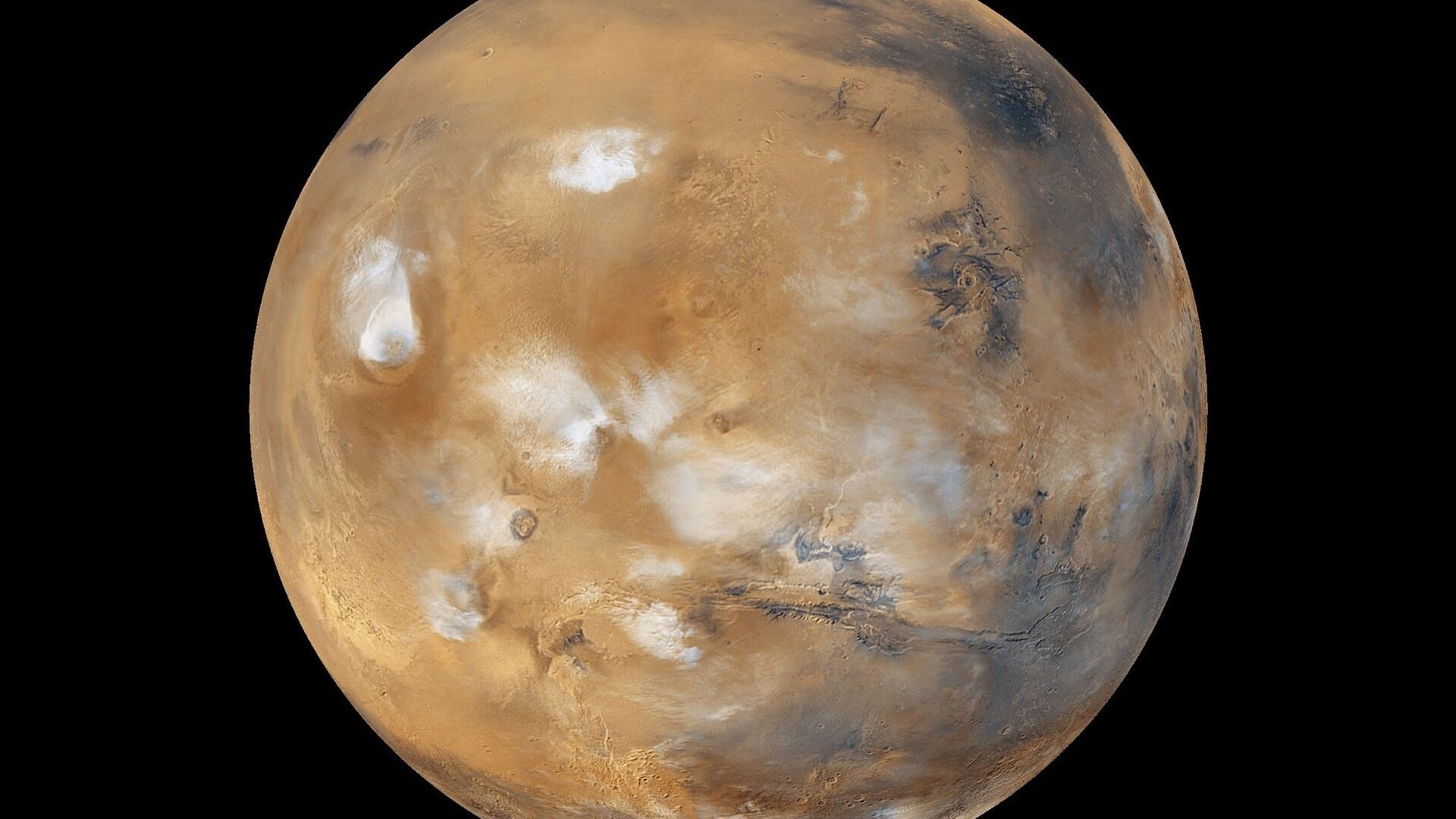A potential explanation for the strange black patterns spotted on satellite images of Mars’ southern pole has emerged thanks to the efforts of scientists from Trinity College Dublin and their colleagues at Durham University and the Open University.
According to Live Science, the patterns, whose "creepy" appearance earned them the "araneiforms" ("spider-like") moniker from researchers, and which measure up to a kilometre across, were discovered over two decades ago.
In a bid to understand the processes that led to these shapes’ emergence, the scientists used a slab of carbon dioxide ice (as Mars’ atmosphere mostly consists of CO2) and a machine that simulates the Red Planet’s atmosphere.
The team discovered that, upon making contact with "a much-warmer bed of Mars-like sediment," a portion of the ice immediately transformed into gas, leaving "spidery cracks" on the slab’s surface, the media outlet notes.
"This research presents the first set of empirical evidence for a surface process that is thought to modify the polar landscape on Mars," said Lauren McKeown, a planetary scientist at the Open University and study lead. "The experiments show directly that the spider patterns we observe on Mars from orbit can be carved by the direct conversion of dry ice from solid to gas. It is exciting because we are beginning to understand more about how the surface of Mars is changing seasonally today."

